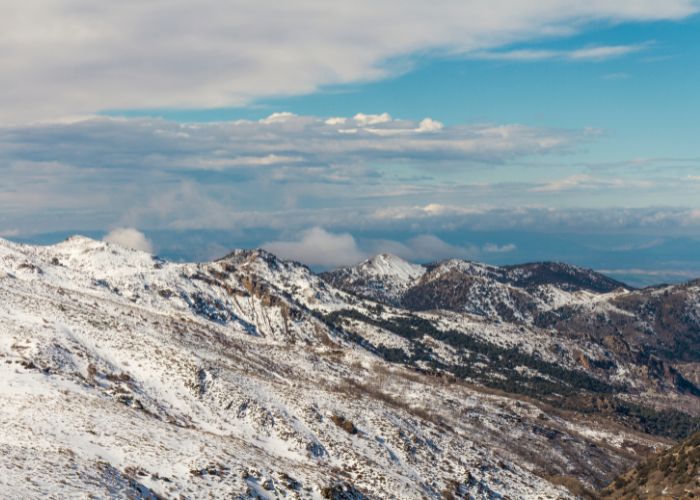MONACHIL – Sierra Nevada ski station wants to store snow for use next season. It has already put out a tender for this so-called ‘snow farming’. However, environmentalists and experts oppose this initiative.
The Sierra Nevada closed the 2022/2023 season with little snow but with many visitors. The resort was largely dependent on artificial snow due to the lack of natural snow caused by the scarcity of precipitation and high temperatures.
Despite this, it managed to attract a large number of visitors and host important winter sports events. In addition to the lack of snow, there were some other challenges. Amongst those were closures due to high winds and the unexpected rock fall that closed the access road to the area. The ski resort management is now working to prevent such incidents in the future.
Related post: Little snow at the start of the ski season in Spain
“Snow Farming”
One of the plans of Cetursa, the public company that manages the ski resort in Granada, is the storage of snow using the “snow-farming” method. The snow from one season is stored to be used in the next season. Paradoxically, the idea cannot be implemented this year due to the lack of precipitation. Environmental specialists also point to other negative consequences of the method for the natural environment.
With snow-farming, an important layer of snow covering Spain’s highest mountains would be preserved under special tarpaulins that repel heat. According to some studies, between 60 and 70% of this “cultivated” snow survives from one season to the next. That would allow the resort to use the snow as a resource when it doesn’t rain enough to allow the opening of the season. The technique already exists in countries such as Switzerland or Finland but is also being used in the Aragonese Pyrenees.
Related post: The effects of the driest summer on the Sierra Nevada
Harmful to the environment
According to the environmental group Ecologistas en Acción, this practice harms the environment in several ways. Cetursa would not take into account the biodiversity of a natural environment that has been a UNESCO Biosphere Reserve since 1986.
The environmental experts are not only in doubt about the effectiveness of the project. They also condemn that water is once again being collected for private benefit. This is also detrimental to the economy of the farmers in the area who depend on the water of the Monachil River. It is fed directly with melt and rainwater from the Sierra Nevada.
Thousands of square metres in the shade
Another issue is that a location is needed for the storage of snow of more than 1,000m2. It should be located in an area where there is little sun and wind. Usually, these are precisely the places with the greatest biodiversity. This affects protected or endemic species that could potentially disappear forever.
Which water is lost?
The snow in the Sierra Nevada that melts eventually forms water for an environment it would not reach if stored for business purposes. The experts challenge the Cetursa board’s argument that snow is water that is lost. It is water that is part of a natural cycle.
Approval required
Cetursa has already admitted that the plan has to be postponed due to the lack of snow. The environmental authority must also give its approval. In addition, the chosen technical solution still has to be handed over to the Sierra Nevada National Park Board for evaluation.


